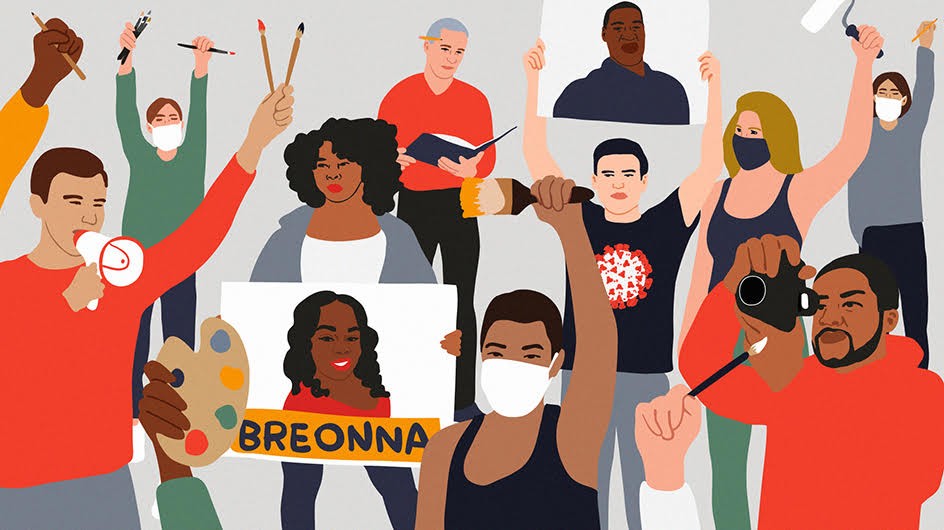This is part of a Columbia News series, titled Lessons Learned, which invites the Columbia community to reflect on the pandemic and the insights they have gained from their COVID-19 experience. These essays speak to the innovation, creativity and resourcefulness we have witnessed during this period of unprecedented challenge, as well as some of the silver linings in the actions we have had to take by necessity.
As a curator, art historian and director of the Wallach Art Gallery, I find myself responding to my experiences during COVID-19 both as an individual and as one whose identity is inseparable from a belief in the potency and value of the visual arts to engage critically with the world. Early 20th-century European avant-gardists, including the Dadaists and Surrealists, enlarged their practices beyond the making of art objects to encompass philosophy, cultural criticism and politics. As a response to the violence of World War I, these artist groups called for an overthrow of oppressive bourgeois rules by subverting rational thought.
In the third quarter of the 20th century, artists’ heroic efforts in the U.S. effectively responded to governmental inaction when faced with the horrific HIV/AIDS pandemic and the accompanying lethal prejudices. Artists’ highly influential social interventions—and iconic phrases such as "Silence=Death," often deployed on a lapel pin or T-shirt (which I consider a precursor to #EndWhiteSilence)—ushered in a new era of art activism. Their determination to defend the sick and fight for medical research and services altered history by challenging public opinion and ultimately saving lives.
Part of the tragedy of COVID-19 is the tsunami-like speed of its arrival and the scope of its destructive force. Unfortunately, it is certain that more virus-derived pandemics will follow. While no artist is likely to develop a vaccine for the coronavirus, they use memory and imagination, their common sense and critical thinking, to undermine the gullibility and denial endemic to American culture in times of crisis.
Over the last few months, I have been preparing "The Protest and The Recuperation," an exhibition of contemporary art about mass protests and our need for recovery that spans the Arab Spring to COVID-19. This is one of many projects at the Wallach that engages pressing questions in the public realm. Isolation, and having to navigate a disjointed social sphere during the so-called Great Pause, has forced our bodies into spaces of confinement and physical hyper-locality. As we are inundated by the necessity of the screen, it’s important to be cognizant of the corporatization of its visual field. As savvy as digital protest has become, it does not replace the intimacy, exhilaration and solidarity of corporeal rage and resistance. I had feared that the global quarantine and limitations on our mobility would curtail the power of collective street resistance that ricocheted around the world in 2019. It didn’t. As I write this, protests—bodies in the streets—are raging across America in memory of George Floyd and all the black people killed without cause by police over the past several years and throughout U.S. history.
Art doesn’t allow falsehoods to rule. It strips down the façade of so-called normalcy. Artists will surely create new images that compel us to reflect on, and act wisely about, the convergence of the coronavirus, race and American violence. In a reference to Scot-Gil Heron’s 1971 song, “The Revolution Will Not Be Televised,” maybe the revolution will be televised, become a meme and go viral, but the mediated version will never replace the powerful intimacy offered by the physical object, in-person art experience or live, collective protest.
Betti-Sue Hertz is the Director and Chief Curator of the Wallach Art Gallery.
